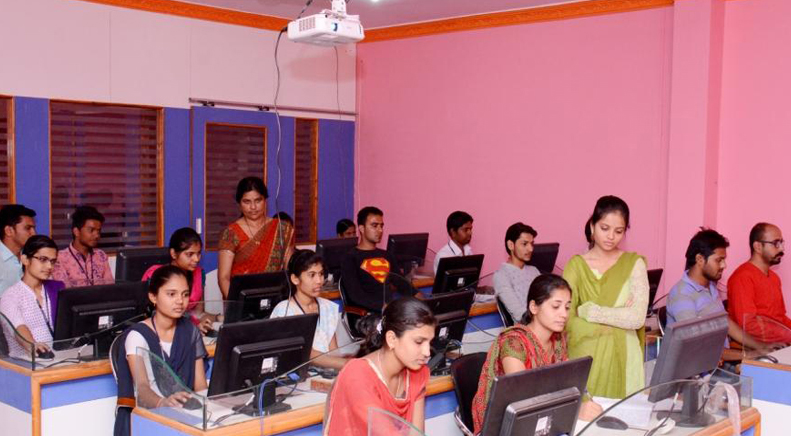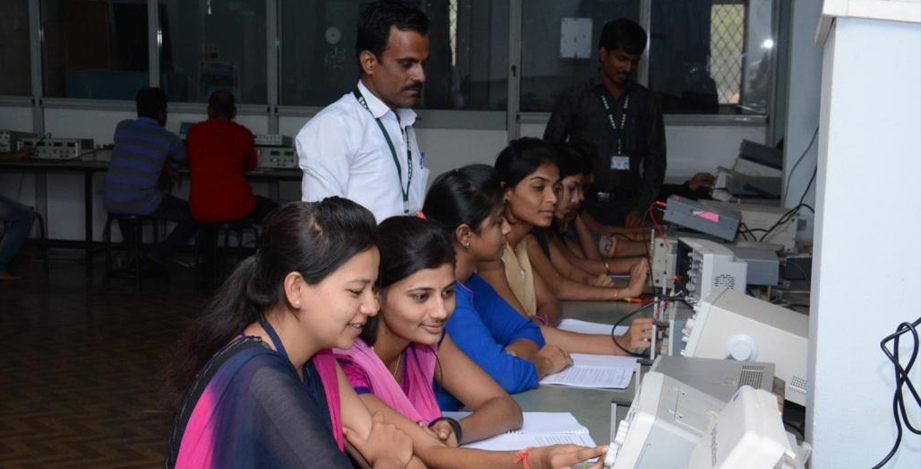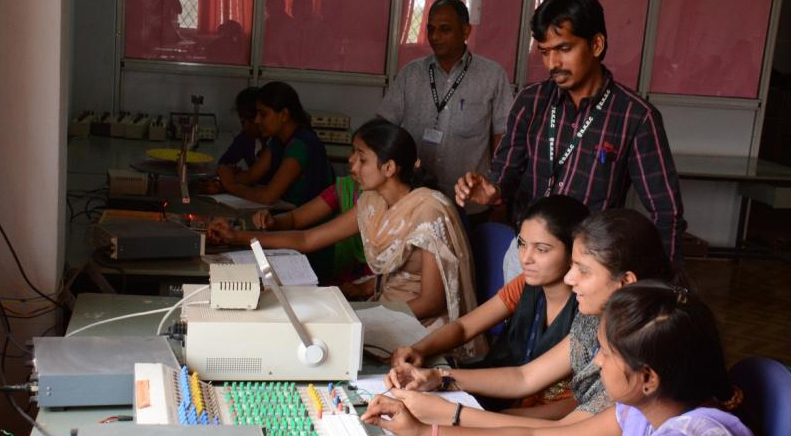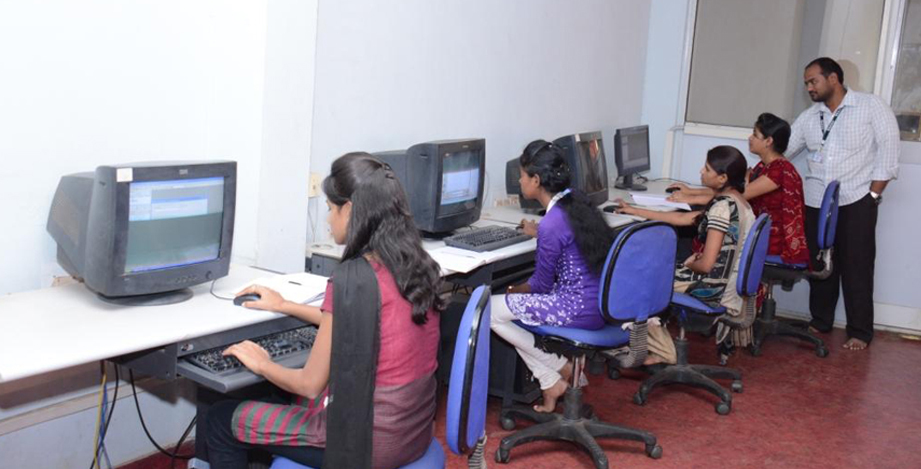The Department of Electronics and Communication Engineering was established in the year 1999 with present intake of 90 students. To emerge as a Centre of Academic Excellence in Electronics, Communication and related domains through knowledge generation, acquisition and dissemination meeting the global needs and standards. In the fast changing era of modern life Electronics & Communication Engineering has played a key role. Electronics Engineers have played an important role in improving quality of human life and also contributed for economical growth of the nation and world at large. We are imparting quality education through state of the art curriculum, conducive learning environment and research with scope for continuous improvement leading to overall professional success.
To prepare the students for global competence, with core knowledge in Electronics and Communication engineering having focus on research to meet the needs of industry and society.
To provide a student centered learning environment which emphasizes close faculty-student interaction and co-operative education.
To prepare students who excel in the engineering profession, qualified to pursue degrees, and possess the technical knowledge, critical thinking skills, creativity, and ethical values.
To train the students for attaining leadership in developing technology for the betterment of society and sustaining the world environment.

Microcontroller Lab / DSP Lab
A microcontroller is a self-contained system with peripherals, memory and a processor that can be used as an embedded system. Microcontrollers were originally programmed only in assembly language but various high level programming languages such as C, are now also in common use to target microcontrollers. Compliers for general purpose languages will typically have some restrictions as well as enhancements to better support the unique characteristics of microcontrollers.
A simulator shows the internal processor state and also that of the outputs, as well as allowing input signals to be generated. While on the one hand most simulators will be limited from being unable to simulate much other hardware in a system, they can exercise conditions that may otherwise be hard to reproduce at will in the physical implementation, and can is the quickest way to debug and analyze problems.
The DSP lab consists of a number of hardware experiments illustrating the programming of real-time processing algorithms on the floating-point DSP. Programming of the DSP chip is done in C (and some assembly) using the Code Composer Studio (CCS) integrated development environment. The entire C filtering functions translates with minor changes to the CCS environment. Familiarity with C programming is necessary in order to successfully complete this lab course. MATLAB is also necessary and will be used to generate input signals to the DSP and to design the filters used in the various examples.
Power Electronics Lab
Power Electronics is the application of solid state electronics to the control and conversion of electric power. It also refers to a subject of research in electronic and electrical engineering which deals with the design, control, computation and integration of nonlinear, time-varying energy-processing electronic systems with fast dynamics.
The Power Electronics laboratory is built around a reconfigurable circuit board termed the Power-pole board, along with accessory daughter boards. The course is an introduction to switched-mode power converters. It provides a basic knowledge of circuitry for the control and conversion of electrical power with high efficiency. These converters can change and regulate the voltage, current, or power; dc-dc converters, ac-dc rectifiers, dc-ac inverters, and ac-ac cycloconverters are in common use. Applications include electronic power supplies, aerospace and vehicular.


Analog Communication + LIC Lab / Adv. Comm. Lab:
TAnalog Communication Lab deals with the experiments related to Communication and OP-AMP circuits. The Major equipments include CROs, Function Generators, Power Supplies and Multimeters. Communications Technology Laboratory (CTL) advances the measurement science underlying wireless technologies ranging from the microchips that generate and process signals to the antennas that send and receive them. These works establishes the metrological foundations for higher speeds, better connections and more ubiquitous access amid rising wireless demand from governments, businesses, and you.
What do smartphones, radar, military and public-safety radios, satellite phones, mobile video, wearable devices, the Internet of things, and smart vehicles have in common. They all depend on wireless spectrum with insatiable demand from these and countless other wireless applications, thereís an unprecedented crowding of the airwaves. Thatís driving the development of increasingly sophisticated technologies and applications capable of transmitting and receiving signals at higher frequencies and in shared frequency bands.
Microprocessor / VLSI Lab
A microprocessor incorporates the functions of a CPU on a single integrated circuit or a few integrated circuits. Microprocessors use sequential digital logic as they have internal memory and operate on numbers and symbols represented in the binary numeral system. They are designed to perform arithmetic and logic operations that make use of data on the chip. General purpose microprocessors in PCs are used for multimedia display, computation, text editing and communication. Several microprocessors are part of embedded systems. These embedded microprocessors provide digital control to several objects including appliances, automobiles, mobile phones and industrial process control.
The purpose of this laboratory is to introduce architecture and design concepts of modern complex VLSIs and system-on-chips. One will be able to use mathematical methods and circuit analysis models in analysis of CMOS digital electronics circuits, including logic components and their interconnections
One will have an understanding of the characteristics of CMOS circuit construction and the comparison between di?erent state-of-the-art CMOS technologies, thus helping to complete a significant VLSI design project having a set of objective criteria and design constraints. The CAD software used is from the CADENCE.

